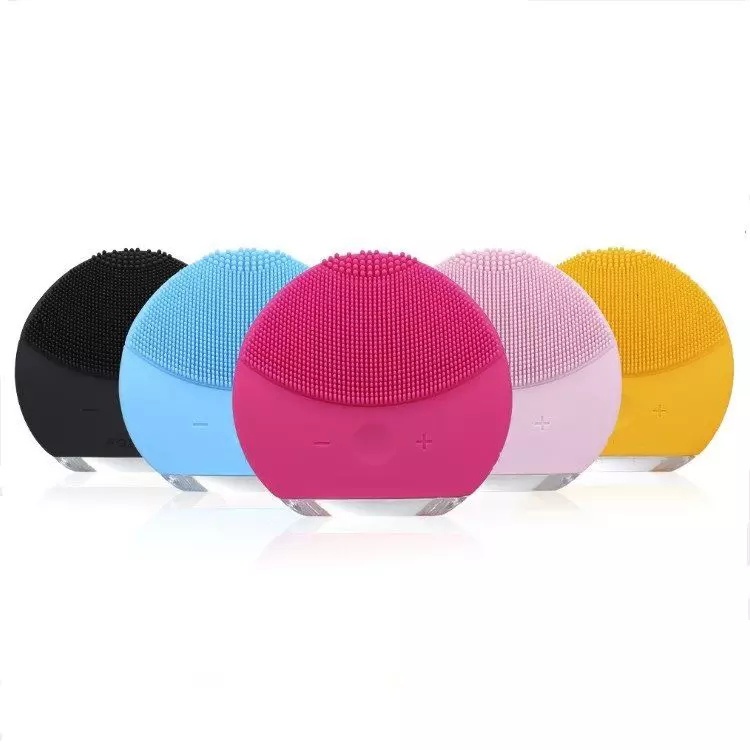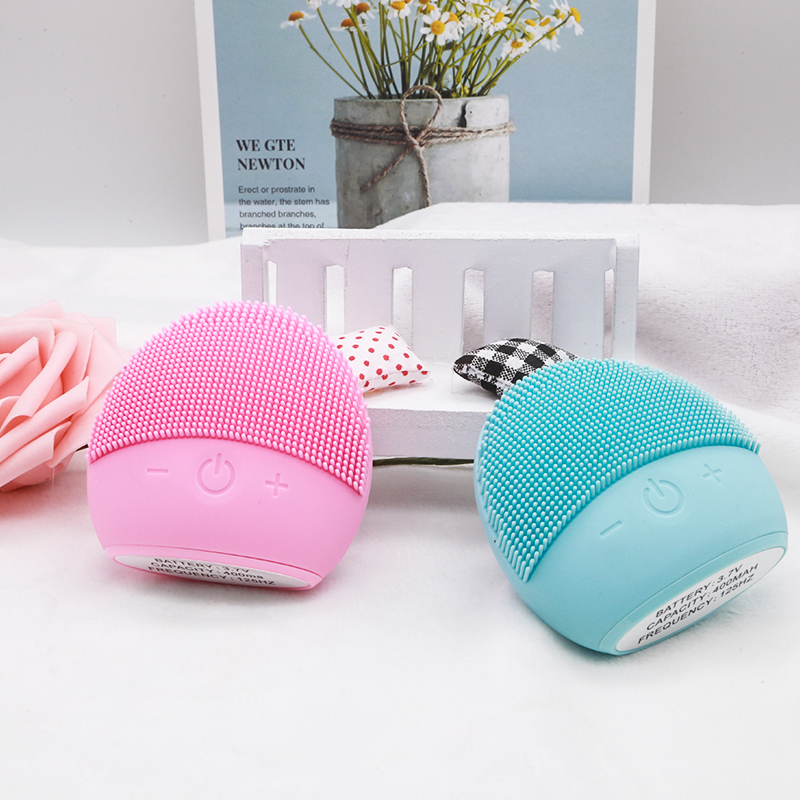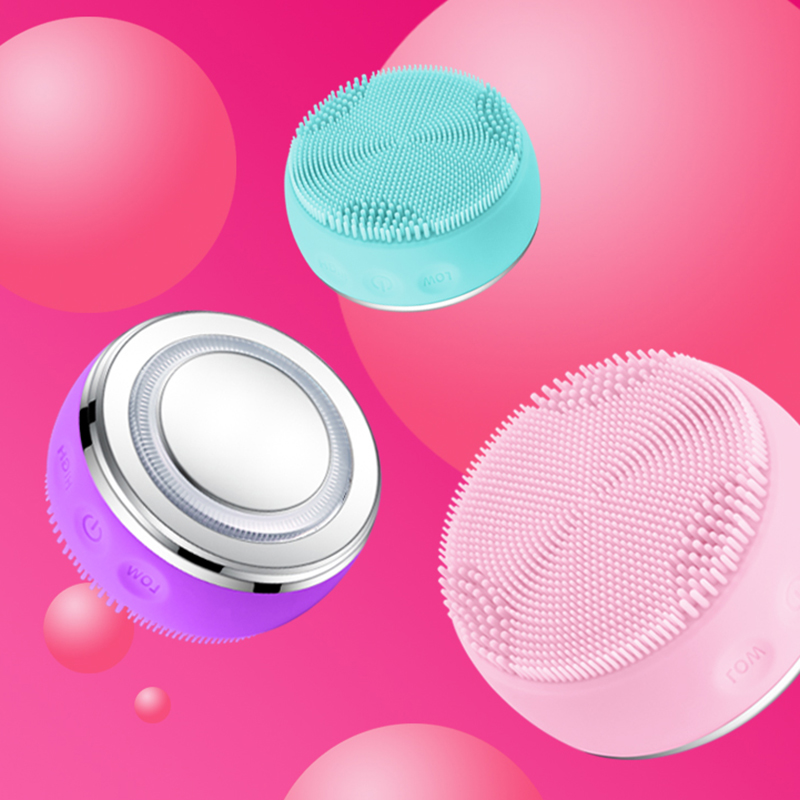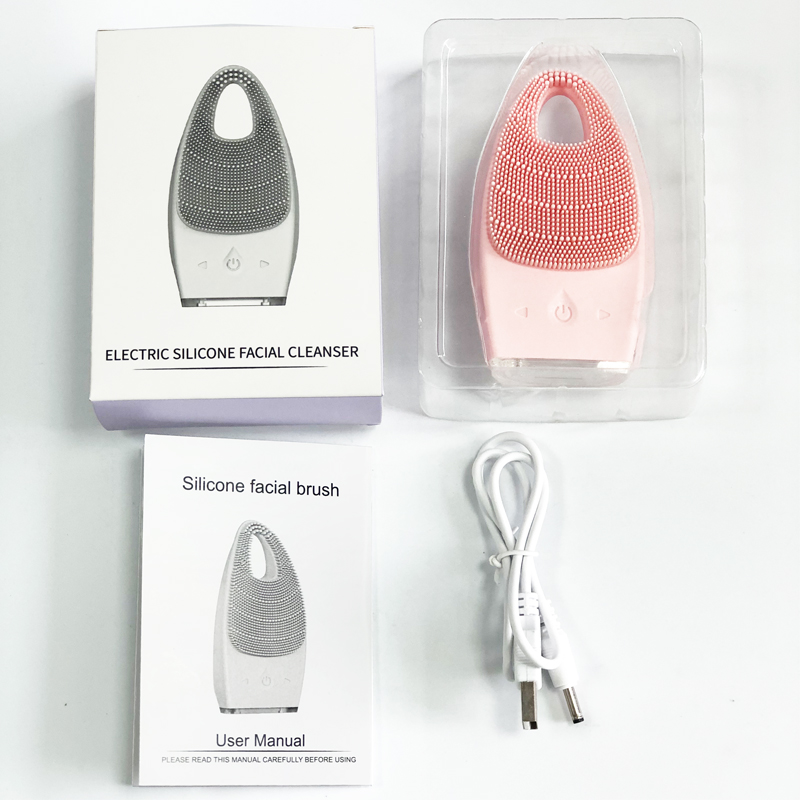Best cleansing brushes for sensitive and acneprone skin
Summary
Cleansing brushes for sensitive and acne-prone skin are specialized skincare tools designed to provide a gentle yet effective cleansing experience. These brushes come in various forms, including manual, oscillating, rotating, vibrating, and multi-functional designs, each catering to different skin types and concerns. Their popularity has surged due to their ability to enhance cleansing routines, promote better absorption of skincare products, and offer a deeper clean compared to traditional hand washing. However, the suitability of these brushes for sensitive and acne-prone skin is a matter of significant discussion, as improper use can lead to irritation and exacerbate existing skin conditions.
The effectiveness of cleansing brushes can vary widely depending on their type and the user's skin sensitivity. Manual brushes offer control over intensity, while oscillating and vibrating brushes provide gentler cleansing options that are often recommended for sensitive skin. Conversely, rotating brushes may be too abrasive, potentially leading to over-exfoliation and irritation. Additionally, multi-functional brushes combine different features, appealing to users looking for versatility in their skincare regimen.
Research has shown that cleansing brushes can improve skin clarity and texture by effectively removing dirt, oil, and makeup, and enhancing circulation. Clinical studies have indicated that these devices can be particularly beneficial for those with mild to moderate acne when used correctly.
Nevertheless, dermatologists caution that individuals with sensitive skin or inflammatory acne should approach cleansing brushes with care, as aggressive use can damage the skin barrier and provoke further irritation.
In summary, while cleansing brushes can offer significant benefits for sensitive and acne-prone skin, it is essential for users to select the right type, practice proper hygiene, and monitor their skin's response to avoid potential adverse effects. This balance of effectiveness and caution underscores the importance of informed usage when integrating cleansing brushes into a skincare routine.
Types of Cleansing Brushes
Facial cleansing brushes are available in various types, each designed to cater to different skin needs and preferences. Understanding the distinctions among these brushes can help users select the most suitable option for their skin type.
Manual Brushes
Manual facial cleansing brushes are simple, non-electric tools that allow users to control the intensity of cleansing. They are often recommended for basic cleansing and exfoliation without the potential harshness of powered options. Many users find that manual brushes offer sufficient cleansing benefits while being gentle enough for sensitive skin.
Oscillating Brushes
Oscillating brushes move back and forth to cleanse the skin. These brushes are generally considered gentler than rotating brushes, making them more appropriate for sensitive skin types. Their design allows for a thorough cleansing experience without excessive abrasion, which can be particularly beneficial for those with skin sensitivities.
Rotating Brushes
Rotating facial cleansing brushes have heads that spin, providing a more intensive exfoliation. These brushes are often recommended for individuals with oily or combination skin, as they can effectively remove dirt and oil buildup. However, they can be too abrasive for sensitive skin and require regular replacement of the brush heads to maintain effectiveness.
Vibrating Brushes
Vibrating (or sonic) brushes utilize quick vibrations to dislodge dirt and oil from the skin. These brushes tend to be gentler than their rotating counterparts and can provide a deep clean without the risk of over-exfoliation. Vibrating brushes are often seen as a high-end option, with features that enhance their cleansing abilities, such as multiple speed settings and waterproof designs.
Multi-Functional Brushes
Some cleansing brushes combine different features, such as multiple brush heads or additional functions like massaging capabilities. These multi-functional devices can cater to various cleansing needs and provide deeper pore cleansing, making them versatile options for users seeking a more comprehensive skincare routine. Understanding the types of cleansing brushes available and their respective benefits allows users to choose the best option for their specific skin concerns, particularly for those with sensitive or acne-prone skin.
Key Features to Consider
When selecting a cleansing brush for sensitive or acne-prone skin, several key features should be taken into account to ensure the best results without causing irritation or exacerbating existing skin issues.
Recommended Cleansing Brushes
When selecting a facial cleansing brush suitable for sensitive and acne-prone skin, several high-quality options stand out based on user reviews and expert recommendations.
Top Recommendations
FOREO LUNA™ 4 The FOREO LUNA™ 4 is a smart facial cleansing device featuring silicone technology that is 35 times more hygienic than traditional nylon bristle brushes. It offers three different brush types tailored for balanced, sensitive, or combination skin. Additionally, it includes gentle, regular, and deep cleanse modes, along with 16 adjustable T-Sonic pulsation intensities for a customized cleansing experience.
Michael Todd Beauty Soniclear Elite This sonic cleansing brush utilizes patented technology to oscillate 18,000 micro-movements per minute. It has six speed settings and 20,000 brush bristles with rounded tips, ensuring a gentle yet effective cleansing and exfoliation system for all skin types. The antimicrobial feature adds an extra layer of hygiene, making it a great option for those with sensitive skin.
PMD Clean Silicone Brush Combining ultra-hygienic silicone with SonicGlow Technology, the PMD Clean generates 7,000 vibrations per minute, providing deep pore cleansing. It offers four customizable modes, catering to both sensitive skin types and those needing a more intense clean. This brush is designed to be gentle while effectively removing impurities from the skin.
Naturopathica Facial Cleansing Brush For those seeking a more affordable option, the Naturopathica Facial Cleansing Brush features ultra-soft nylon bristles. It is a straightforward choice that provides the benefits of a cleansing tool without the complexity of electric brushes, making it suitable for individuals with sensitive skin.
Key Features to Consider
When selecting a cleansing brush, consider the following features to ensure optimal care for sensitive and acne-prone skin:
- Material: Brushes made from silicone are generally gentler on the skin and easier to clean compared to those with synthetic bristles.
- Speed Settings: Brushes that offer multiple speed settings allow users to customize the intensity of cleansing according to their skin type and specific needs. A minimum of two settings is recommended for versatility.
- Size: A smaller brush size provides better control and the ability to reach congested areas, ensuring a more thorough cleanse.
Additional Considerations
It is essential to maintain the hygiene of cleansing brushes to prevent skin irritation. Regular cleaning of the brush after each use and deep cleaning with a vinegar solution weekly is advisable. Users should also be cautious, as using overly harsh brushes can disrupt the skin barrier and lead to irritation or acne flare-ups.
Benefits of Using Cleansing Brushes
Cleansing brushes have become a popular addition to skincare routines, particularly for those with sensitive or acne-prone skin. These devices offer several advantages over traditional hand cleansing methods.
Enhanced Cleansing Power
Cleansing brushes are designed to provide a deeper clean than manual cleansing alone. The combination of bristle action and movement or vibration helps to remove dirt, oil, and impurities from the skin more effectively. Regular use can lead to cleaner, softer skin and can improve overall clarity by minimizing leftover makeup and other residues.
Exfoliation and Circulation Boost
Many cleansing brushes add an extra layer of exfoliation, which can help to clear out clogged pores and enhance the skin's texture. The gentle massaging effect of these brushes not only aids in exfoliation but also promotes circulation, contributing to a healthier, more radiant complexion.
Improved Absorption of Skincare Products
Using a cleansing brush may enhance the absorption of skincare products. Clinical studies indicate that users experience significantly better absorption rates for topical products after employing a cleansing system. This means that moisturizers and treatments can penetrate more effectively, maximizing their benefits.
Customizable Options
Cleansing brushes come in various forms, from simple manual models to high-tech versions with adjustable speed settings and additional features like heating and massaging capabilities. This variety allows users to select a brush that suits their skin type and personal preferences, enhancing the overall cleansing experience.
Gentle Yet Effective
While some users may initially experience breakouts when starting to use a cleansing brush, dermatologists often note that this can be a normal reaction as the skin adjusts. When used correctly—selecting brushes with soft bristles and not overusing them—cleansing brushes can be gentle enough for sensitive skin and help maintain a balanced skin barrier without causing irritation.
How to Use Cleansing Brushes
Using facial cleansing brushes effectively requires attention to technique, frequency, and hygiene to ensure optimal results without harming the skin.
Introduction to Usage
Facial cleansing brushes can provide deeper cleansing than manual methods, helping to remove dirt, oil, and makeup while promoting a healthy glow through gentle exfoliation and improved circulation. However, they must be used properly to avoid irritation, especially for those with sensitive or acne-prone skin.
Frequency of Use
For optimal results, it is recommended to limit the usage of facial cleansing brushes to once or twice a week, particularly when first incorporating them into your skincare routine. This allows the skin to adjust and reduces the risk of over-exfoliation and potential irritation. Individuals with sensitive skin should start with a gentle approach, perhaps using the brush just once a week to gauge their skin's response.
Technique
When using a cleansing brush, gentle pressure is key. Avoid applying excessive force, as this can damage the skin barrier and lead to irritation, acne, and dryness. Employ light, circular motions to cleanse the face effectively without aggravating sensitive areas. It's advisable to start with the lower time recommendations from the manufacturer’s instructions to minimize irritation risks, particularly for those with delicate skin.
Hygiene and Maintenance
Hygiene is crucial when using facial cleansing brushes. Improper cleaning can lead to bacteria buildup, potentially causing skin issues. Rinse the bristles under warm water after each use and consider soaking the brush weekly in a mixture of warm water and vinegar for a deeper clean. Always allow the brush to air dry completely before the next use, as this helps maintain its effectiveness and hygiene.
Professional Recommendations
For individuals dealing with acne, it's particularly important to consult a dermatologist before integrating a facial cleansing brush into their routine. While these tools can assist in deep cleansing, improper use can exacerbate the condition. Listening to your skin and adjusting the frequency and technique as needed is essential for achieving the best results without compromising skin health.
Potential Risks and Precautions
While facial cleansing brushes can offer several benefits, such as enhanced cleanliness and improved skin texture, they also pose potential risks, particularly for sensitive and acne-prone skin types. It is crucial for users to be aware of these risks and to take necessary precautions to avoid adverse effects.
Skin Irritation and Over-Exfoliation
The use of cleansing brushes can lead to skin irritation, especially for individuals with sensitive skin. Over-exfoliation is a significant concern; it occurs when the skin is subjected to excessive physical exfoliation, resulting in symptoms such as redness, dryness, and a burning sensation. Dr. Michael Garner, a board-certified dermatologist, warns that frequent use of cleansing brushes may exacerbate conditions like atopic dermatitis or rosacea, leading to increased skin sensitivity and discomfort.
Damage to the Skin Barrier
Over-exfoliation can compromise the skin's protective barrier, which is essential for maintaining hydration and defending against environmental aggressors. A damaged barrier can render the skin more vulnerable to pollutants, bacteria, and irritants, accelerating the aging process and worsening skin conditions like acne and rosacea. Users should monitor their skin's response to cleansing brushes and adjust usage frequency to mitigate these risks.
Considerations for Different Skin Types
Not all skin types respond equally to cleansing brushes. While many users can benefit from their use, those with very sensitive or inflamed skin should approach with caution. Aggressive exfoliation may aggravate irritation, making it crucial to choose brushes with soft bristles and to use them sparingly. For acne-prone skin, selecting a brush that provides gentle massage rather than harsh scrubbing can prevent irritation and potential breakouts.
Best Practices for Safe Use
To minimize risks, users should adopt best practices when using cleansing brushes. It is recommended to apply light, gentle pressure while cleansing, avoiding excessive force that can damage the skin barrier. Additionally, pairing a brush with a non-abrasive, hydrating cleanser can complement the exfoliation process without causing further irritation. Harsh exfoliants or acids should be avoided, as the brush itself provides adequate exfoliation.
Clinical Studies and Research Findings
Research into the efficacy of facial cleansing brushes, particularly for sensitive and acne-prone skin, has yielded important insights. A multi-center cohort study aimed to evaluate the clinical efficacy and safety of twice-daily facial cleansing using an oscillatory sonic brush. The findings indicated that this cleansing regime may offer an attractive and safe option for the maintenance and treatment of individuals with mild-to-moderate acne and acne-prone skin. The panel discussions surrounding the use of sonic brushes highlighted both their benefits and potential pitfalls. For example, while these brushes are designed to provide a deeper cleanse than manual washing, they can also cause skin irritation. Dermatologists have noted that red, irritated skin is common when using sonic brushes, as stiff bristles may damage delicate capillaries and cause microabrasions. Consequently, it is recommended that individuals avoid using brushes if they have moderate to severe inflammatory acne, as the brushes may exacerbate the condition due to their aggressive cleaning methods. Expert recommendations also emphasize the importance of gentleness when selecting a facial cleansing brush. The bristles suitable for combination or dry skin types may not be appropriate for acne-prone skin, where they could potentially aggravate acne and spread bacteria. It is crucial to choose brushes designed for sensitive skin, which provide a gentle massage to avoid irritation while effectively cleansing the skin. Additionally, dermatologists have pointed out that the incorporation of facial brushes can significantly enhance cleansing routines. They facilitate the removal of dirt, oil, and makeup more effectively than traditional hand washing, contributing to a healthier skin barrier when used correctly. However, users are advised to maintain proper hygiene by cleaning their brushes regularly to prevent bacterial buildup, which can counteract the benefits of using the device.
 English
English Español
Español Português
Português Pусский
Pусский Français
Français Deutsch
Deutsch 日本語
日本語 한국어
한국어 Italiano
Italiano عربى
عربى



